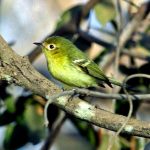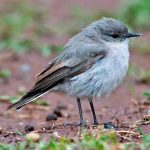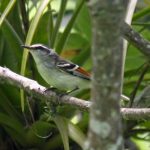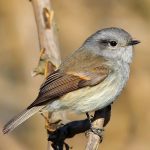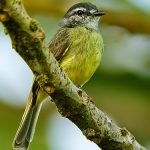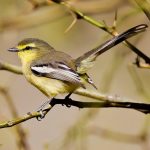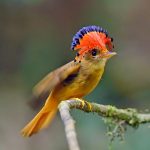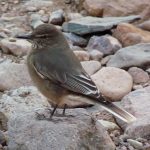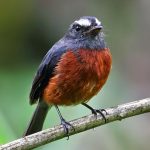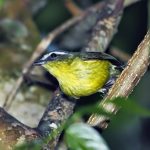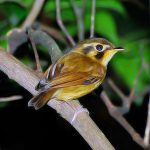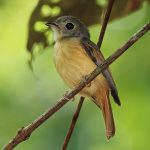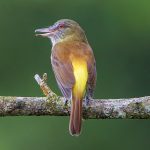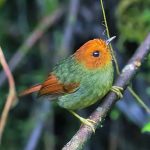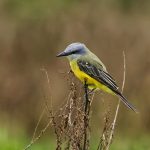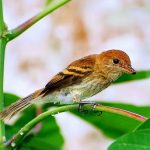Hammond's flycatcher
 |
| Photo by Pablo Leautaud (Flickr) |
Common name:
Hammond’s flycatcher (en); papa-moscas-de-Hammond (pt); moucherolle de Hammond (fr); mosquero de Hammond (es); tannenschnäppertyrann (de)
Taxonomy:
Order Passeriformes
Family Tyrannidae
Range:
This species breeds in western North America, from Alaska to central California and New Mexico. They migrate south to winter from northern Mexico to Nicaragua.
Size:
These birds are 12,5-14,5 cm long and have a wingspan of 22 cm. They weigh 8-12 g.
Habitat:
The Hammond’s flycatcher is mostly found in mature mountain forests, especially cool coniferous forests or mixed forests with Douglas firs Pseudotsuga or spruces Picea mixed with aspens Populus or other deciduous trees. Outside the breeding season they are also found in tropical moist forests and dry scrublands always at high altitudes. They are present at altitudes of 1.000-3.000 m.
Diet:
They catch insects on the wing, sallying out from a perch to take beetles, moths, flies, leafhoppers and small wasps. They also glean caterpillars from the foliage.
Breeding:
Hammond’s flycatchers breed in June-July. The female builds the nest, a compact cup made of weed stems, grass, bark and lichens, lined with finer materials such as feathers, fur and plant down. The nest is placed in an horizontal branch of a tall tree, 3-30 m above the ground. There she lays 3-4 white or yellowish eggs, sometimes with light reddish-brown spots. The female incubates the eggs alone for 12-15 days and the chicks are fed by both parents fledging 16-18 days after hatching. The chicks may remain with the parents for another 1-2 weeks.
Conservation:
IUCN status – LC (Least Concern)
This species has a large breeding range and a global population estimated at 5-50 million individuals. The population as undergone a small increase over the last for decades so, although the logging of old-growth forests may pose an eventual threat, the species is not threatened.
